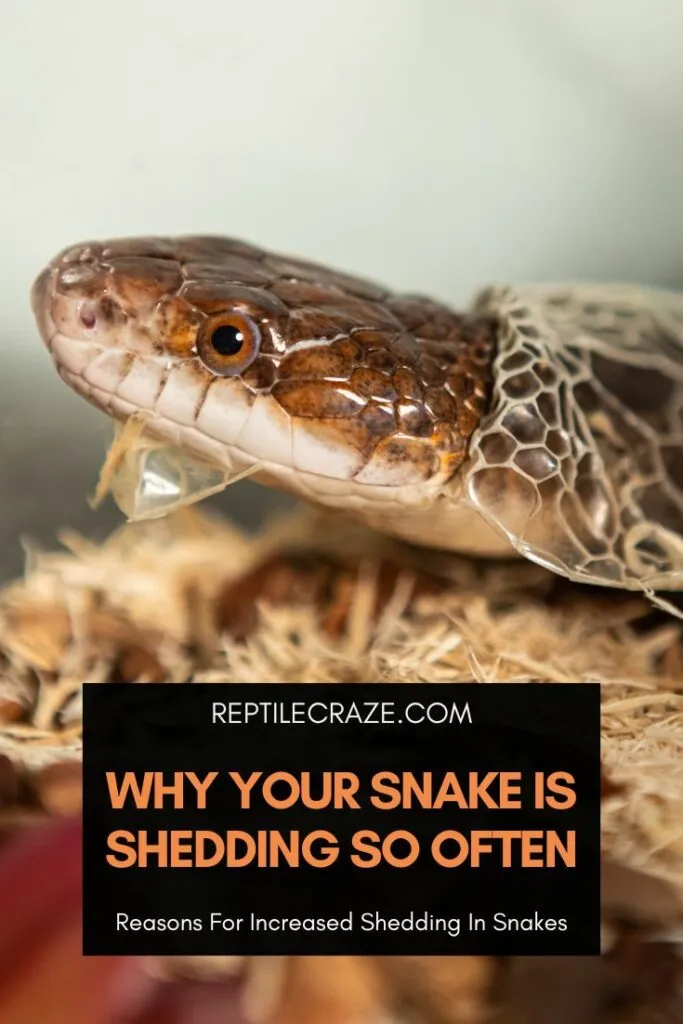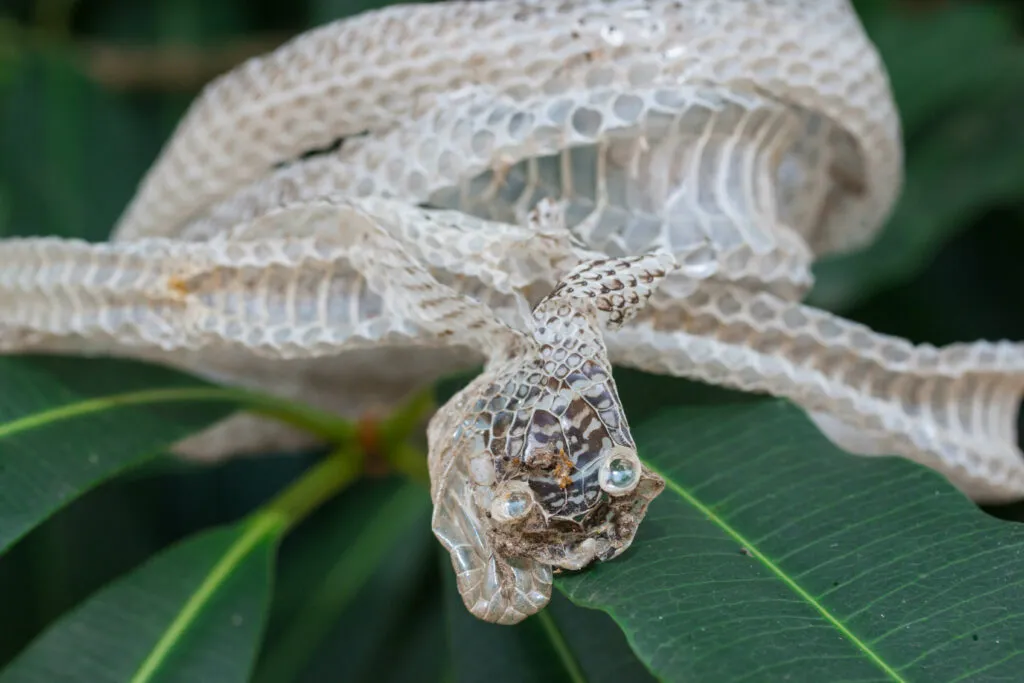
For snakes, shedding their skin is an essential part of life that keeps them healthy and allows them to grow. But shedding can be a stressful time for you and your snake, especially if this seems to be happening too much. How often should snakes shed, and why is your snake shedding so often?
Snakes shed more often when they are in good health and kept in ideal conditions, with appropriate substrate and humidity. Young snakes shed much more frequently than adult snakes. Minor injuries, the presence of parasites, and rapid weight gain could also trigger extra shedding.
Let’s find out more about why snakes shed often and whether you should be worried about your pet.
Table of Contents
How Often Do Snakes Shed?
Snakes should shed their skin between 4 and 12 times per year depending on their species and age. The frequency of shedding can also be influenced by husbandry, health status, and environmental factors.
For example, the temperature and humidity in the habitat.
However, poor humidity, bacterial infection, or heavy parasite loads tend to cause shedding to happen less often, or to be problematic. Having good conditions for your snake will not cause them to shed more often than they need to.
In fact, if your snake is shedding often, but with ease and in one piece, this is a great sign that they are healthy. Shedding skin allows them to grow, prevent parasite infestations, and heal themselves from minor injuries and infections.
Which Pet Snakes Shed Most Often?
How often a snake sheds can differ depending on the species and the individual (Lillywhite & Sheehy Iii, 2016). Young snakes that are growing rapidly shed most frequently.
Here’s a comparison between common pet snake species. But, please bear in mind that the frequency of shedding varies widely between individuals.
You will often find breeders and pet owners whose snakes shed much more or less than these averages.
| Species | Frequency of shed when growing quickly | Frequency of shed for adult snakes |
| Corn Snake | 2-5 weeks | 4-6 times per year |
| Royal Python | 4 weeks | 6 weeks |
| California King Snake | 2-4 weeks | 8 weeks |
Why Is My Snake Shedding More Often Than Normal?
The most common reason for your snake to be shedding more often than usual for its species is that it is growing. A snake’s skin doesn’t grow and stretch along with its body.
For a young snake to grow, it must shed the old skin that has become too small.
Another reason could be that your snake was previously unable to shed as often as it needed to. Have you recently improved the humidity in the habitat? Perhaps you are giving your snake more exercise? Or have resolved an infection?
Improvements in the health and husbandry of your snake could increase its success in shedding. This could result in them shedding more often or more quickly than previously.
Natural environmental changes can also cause shedding to happen more often. Many pet snakes will shed more often in summer than in winter.
Shedding helps your snake combat problems with its skin. So, if your snake has a superficial injury, it may shed sooner than usual to aid in healing.
Also, if your snake is shedding often, you should check it thoroughly for mites. Shedding helps to prevent skin parasite infections.
So, if an infestation is beginning, your snake may shed its skin sooner. However, a bad infestation will cause issues such as difficult or incomplete shedding.

Why Would A Snake Shed Twice In One Month?
Young snakes that are growing rapidly can shed their skin as often as twice a month, or every two weeks. This will slow down over time, as the snake nears its full body size.
Why Is My Snake Shedding Again?
Also, you could have been misled about how often your snake is shedding. The layer of skin covering the forked tongue is shed much more frequently than the rest of the skin.
If you are finding shed skin in the habitat, it may not be a sign that your snake is going to have a full shed. It may just be from his tongue!
When To Worry About Your Snake Shedding Often
Complete, problem-free sheds are a sign of a healthy snake. If your snake is shedding often, but the skin is coming away smoothly and intact, you don’t need to worry. However, you should ensure that they are not exposed to parasites in their environment.
However, if your snake is shedding a lot, and having difficulties, this is something to consult the vet about. Warning signs include:
- The skin is coming away in pieces rather than whole
- Old skin is left stuck to the eyes (Check out our article on eye problems in snakes here!)
- Old skin is trapped around the tail
- Sores on skin
- Snake can’t move around normally
If you see these problems with your snake’s shed, you should try to increase the humidity or provide a humidity box. If the issue continues, seek help from your vet.
Never try to pull the skin off yourself as this could cause serious injury to your snake. Also, we highly recommend reading our other articles on shedding in snakes here:
- Should snakes be fed while shedding?
- Should you handle a snake before or while shedding?
- When is it okay to handle a snake after shedding?
Does Overfeeding Cause Increased Shedding In Snakes?
Many pet snakes are overfed, and therefore are overweight. Signs of an overweight snake are:
- Their scales will begin to have margins between them, through which you can see the skin beneath.
- They will be more squishy, and less robust and muscular to the touch.
- They will have obtuse curvature to their back, which is especially noticeable at the join to the tail.
- You may notice some fat rolls when they are curled up, especially when they are handled.
Overfeeding causes your snake to put on fat. As your snake is increasing in size, it might shed more often. However, being a large, obese snake, in the long run, does not result in more frequent shedding.
Unfortunately, overfeeding your snake and the resulting obesity can cause issues during shedding. This could be because obese snakes tend to move around less, and movement is important to shed the skin successfully.
Also, the shed does not come away easily from areas of stretched skin, which can be caused by obesity. This is why it is not advisable to offer
- Enchi Ball Python: A Unique and Stunning Morph of Python regius - March 27, 2025
- Emerald Tree Monitor: The Enigmatic Green Guardian of the Rainforest - March 26, 2025
- The Egyptian Cobra (Naja haje): A Fascinating Serpent - March 25, 2025
